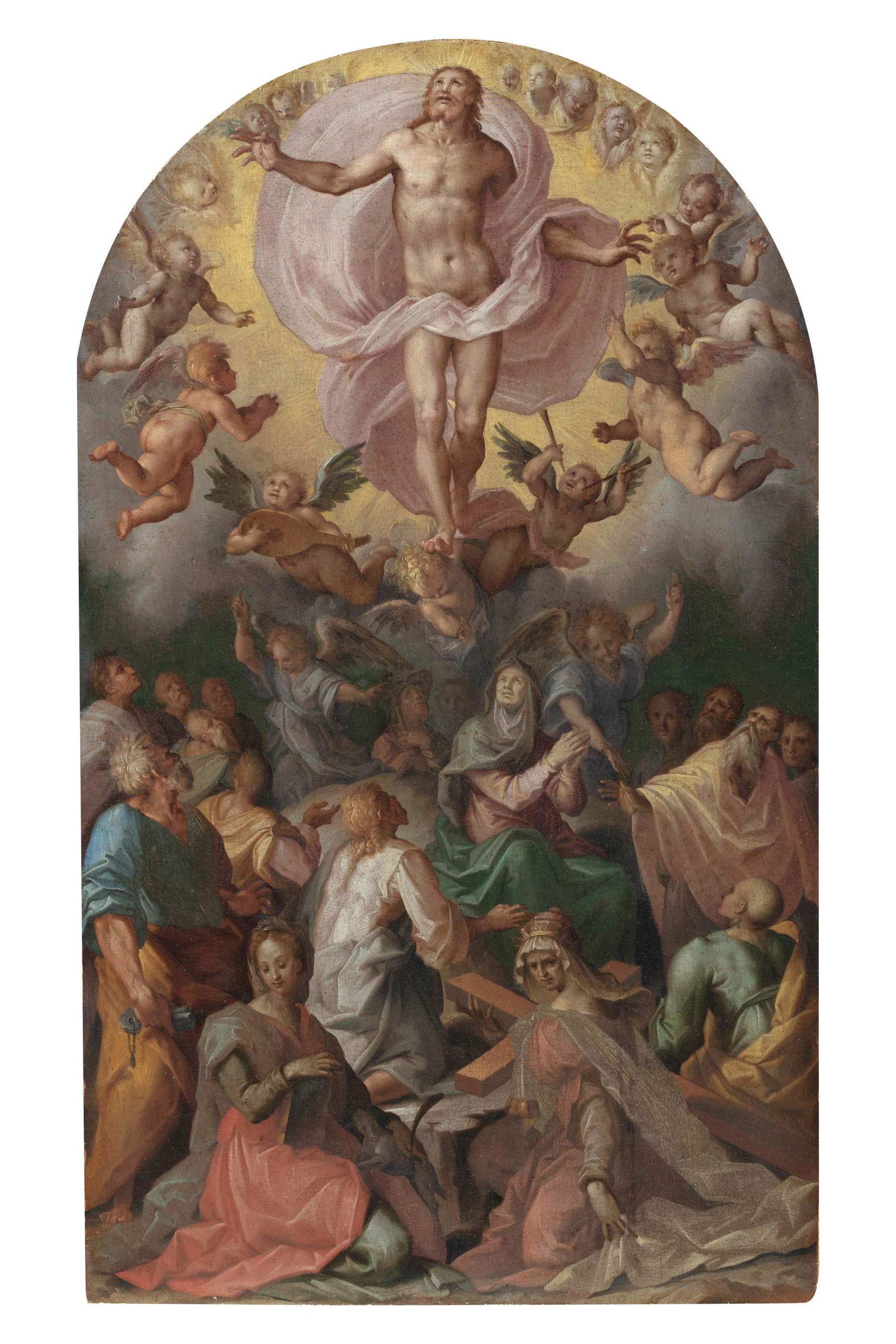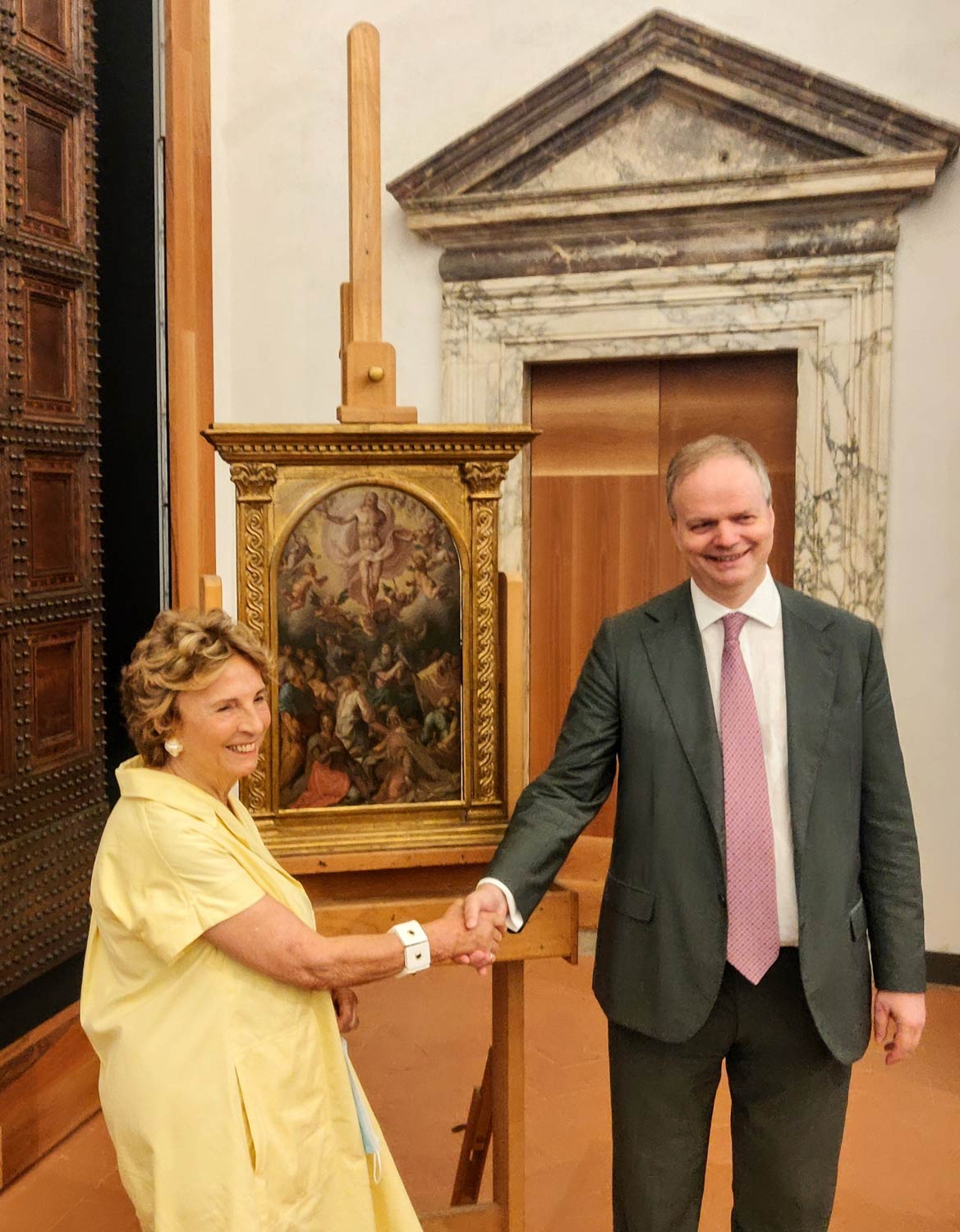Important acquisition for the Uffizi Gallery: the Friends of the Uffizi today donated to the Florence museum a valuable sketch by Maso da San Friano (Tommaso Manzuoli; Florence, 1531 - 1571), the one for theAscension altarpiece intended for the church of Santa Maria del Carmine in Florence. The altarpiece was destroyed in a fire in 1771, so theAscension that now enters the Uffizi is the only surviving evidence that can show us what the altarpiece looked like. The work will soon be on display in the Gallery of Statues and Paintings.
The painting re-emerged from a private collection in northern Italy: the Friends of the Uffizi bought it last May 31 during a Finarte auction in Rome, snatching it away from critic Vittorio Sgarbi, the second highest bidder, at the end of a series of raises. The association that supports the Uffizi managed to buy the work for the sum of 47,380 euros, plus auction fees. The altarpiece intended for the chapel of the Confraternity of Santa Maria delle Laude and Sant’Agnese in the Florentine church of Santa Maria del Carmine, however, remained unfinished due to Maso’s untimely death. It was completed by the younger Giovanni Battista Naldini (Fiesole, 1537 - 1591), but, as mentioned above, it was destroyed in a fire that devastated the church in 1771. A number of preparatory drawings for the model, made by Maso himself, are today preserved in the very Gabinetto dei Disegni e delle Stampe of the Uffizi.
The model of theAscension, datable to 1565, thus constitutes a valuable testimony to the decorative project of the chapel at the Carmine, commissioned and carried out on the occasion of the tricentennial of the foundation of the Compagnia di Sant’Agnese (1269). The saint, in the painting, stands out in the foreground, along with St. Helena, introducing a gesticulating and colorful crowd of cloaked apostles, with the Madonna and angels, in a departure from the formal rigor and compunction imposed by the recently concluded Council of Trent. Maso da San Friano’s debt to Pontormo is evident in the animated composition, saturated with pathos and the almost visionary lighting effects that create delicate iridescence in the figures and drapery. A “truly entertaining” sketch, as art historian Luciano Berti, former director of the Uffizi, called it in his 1963 essay on Maso da San Friano: on that occasion the scholar mentioned the work for the first time and emphasized its assonances with the inventions of Pontormo himself, freely interpreted by Maso with extravagant and at times caricatured effects, starting with the joyous and cheerful putto, suspended halfway between heaven and earth, who serves as the basis for the Savior’s journey to heaven. In this prevailing squiggly, still Mannerist atmosphere, the painting nevertheless shows signs of the religious restlessness of the period. The petite and advanced Virgin and the downward-looking Saint Agnes reflect the climate of devotion and austerity imposed by the Council of Trent.



An original interpreter of late Mannerism in Florence, Maso da San Friano was, according to Vasari, a pupil of Pier Francesco Foschi and created in his short life-just 40 years-paintings for the city’s most important churches, including San Pier Maggiore, Santa Felicita and Ognissanti, participating, in 1571, in the decoration of the famous Studiolo di Francesco I in Palazzo Pitti with two panels depicting Daedalus and Icarus and the Diamond Mines.
“With the return of Maso da San Friano’s model,” says Uffizi director Eike D. Schmidt, "a double restitution is accomplished in Florence: not only is this highly refined painting, preparatory for a large altarpiece for Santa Maria del Carmine (destroyed in the fire of 1771) henceforth to be exhibited across the Arno, at the Uffizi, in a room together with other jewels of the Counter-Reformation period. But also because the work was discovered by Luciano Berti, director of the Uffizi from 1969 to 1987, who in fact first published it in 1963, in his monographic essay on Maso da San Friano. That text focused on the artist who so well represented the artistic and intellectual atmosphere of a period of extraordinary fervor, to whom Berti four years later devoted the volume The Prince of the Studiolo: a true monument that laid the groundwork for understanding Florentine court art in the 1670s. Thanking the Friends of the Uffizi, with its president Maria Vittoria Rimbotti Colonna and vice-president Manuel Guerra, we remember with affection the great Luciano Berti: the scholar who opened our eyes to a period of art history previously too little considered."
“We are happy that another piece of Florence’s artistic history has returned to the city and can be admired by all, Florentines and tourists alike,” says Maria Vittoria Rimbotti Colonna, president of the Friends of the Uffizi. “The Association, which has been supporting the Uffizi for almost 30 years, was very happy, even on this occasion, to contribute to the enrichment of the heritage of the most important museum in the world.”
“I suffered on the phone,” said Vittorio Sgarbi, “as Maso eluded me because of a communication difficulty: the offer seemed not to be collected. And I suffered when I was certain I had lost him. For another reason I called, the next day, Eike Schmidt, and told him of my disappointment. I heard him smile when he revealed that, on the other end, at another phone, vigilant hunter, was he. And Maso was now insured at the Uffizi. I was happy, relieved of melancholy, more than if the lost Ascension were at home. The last dream of a visionary painter who, in the same years as the rediscovered model for the Church of Santa Maria del Carmine, in 1571, painted for the Studiolo of Francesco I in the Palazzo Vecchio, rising above the other painters, the ’Diamond Mine,’ to illustrate the Plinian discussion on the origin of crystal. Derived from the solidification of atmospheric moisture cooled by winds, the crystals stir naked men, who collect them on a rugged, glistening mountain, climbed with ropes and baskets by other prospectors. Among them are Eike and me, in the rush of the race. Eventually one of the naked men offers his stones to exotically attired figures. It is my fate before the inalienable offer of the state. And in those small-format figures, as in the visionary, Pontormesque figures of our model, destined for the Uffizi, Maso shows his extreme dream in the capricious inventions of the last season of the Florentine manner.”
 |
| Important Uffizi acquisition: valuable sketch by Maso da San Friano arrives |
Warning: the translation into English of the original Italian article was created using automatic tools. We undertake to review all articles, but we do not guarantee the total absence of inaccuracies in the translation due to the program. You can find the original by clicking on the ITA button. If you find any mistake,please contact us.